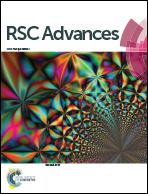Electrochemical impedance spectroscopy (EIS) study on the degradation of acrylic polyurethane coatings
Abstract
Two component polyurethane coatings are widely used for materials protection. Herein, a series of acrylic polyurethane coatings were prepared by reaction of hydroxyl acrylic resin and hexamethylene diisocyanate (HDI) biuret. These coatings have different isocyanate to hydroxyl ratios (expressed as NCO/OH). The degradation process of the coatings was evaluated by electrochemical impedance spectroscopy measurement. Then, the results were analyzed using equivalent electrical circuits. Besides, the adhesion and water resistance of the coatings were also investigated. Experimental results demonstrated that the higher the NCO/OH ratios within a certain range, the better the corrosion resistance. Specifically, the coating with NCO/OH = 1.4 provided the best corrosion resistance, and its impedance modulus still remained at close to 1 × 1011 ohms per cm2 after 50 days immersion. However, the corrosion resistance of coatings with NCO/OH = 0.8 and NCO/OH = 1.0 were relatively poor. More interestingly, with the increase in NCO/OH ratios, the coating's adhesion increased slightly and the water resistance improved noticeably.



 Please wait while we load your content...
Please wait while we load your content...